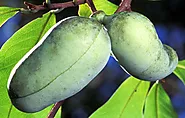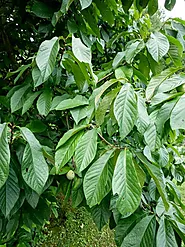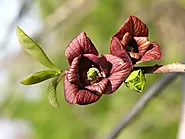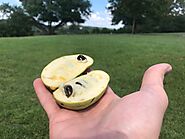-
About
- About Listly
- Community & Support
- Howto
- Chrome Extension
- Bookmarklet
- WordPress Plugin
- Listly Premium
- Privacy
- Terms
- DMCA Copyright
- © 2010-2025 Boomy Labs


 Gold Hat Nursery
Gold Hat Nursery
Listly by Gold Hat Nursery
The Pawpaw (Asimina triloba), native fruit tree to Pennsylvania, offers numerous benefits, including their compatibility with the state's climate, unique and nutritious fruit, low pest and disease pressure, and ecological advantages. These trees are shade-tolerant, have ornamental value, and hold cultural significance. Their increasing popularity among those interested in native and unusual fruits underscores their horticultural, ecological, and culinary appeal, making them a valuable addition to Pennsylvania gardens.
Source: https://www.goldhatnursery.com/p/pennsylvania-gardening-grow-pawpaw-trees

The Pawpaw, North America's largest native fruit, offers a unique tropical taste and a rich nutritional profile. Perfect for temperate climates, its banana-mango-melon flavor enhances various dishes, from fresh snacks to baked delights. This rare, nutritious fruit, seldom found in markets, is a valuable, healthful addition to home gardens.

The Pawpaw tree, native to Pennsylvania, is an ideal choice for local gardens due to its adaptability to the state's climate and soil. Its deep roots in local ecosystems support biodiversity, including being a critical habitat for the zebra swallowtail butterfly. The Pawpaw also holds cultural significance, reflecting Pennsylvania's natural heritage. This low-maintenance, eco-friendly tree is a testament to sustainable gardening and a symbol of Pennsylvania's environmental legacy.

Pawpaw trees are an ideal choice for low-maintenance gardening, boasting natural resistance to pests and fungal diseases. This resilience means fewer chemical interventions are needed, promoting a healthier, more sustainable garden environment. Their inherent toughness against common garden threats simplifies care and enhances their appeal for eco-conscious gardeners. With Pawpaws, enjoy the beauty and bounty of gardening without the usual challenges of pest and disease management.

Pawpaw trees are a boon for gardeners, thriving in various soil types, including wet conditions, and requiring minimal maintenance once established. They are especially suited for those seeking an easy gardening experience. Pawpaws depend largely on rainfall, reducing the need for frequent watering. Their adaptability and low-maintenance nature make them perfect for both novice and experienced gardeners, offering a hassle-free approach to achieving a bountiful garden.

Pawpaw trees, known for thriving in shade, have a rich history in North America. They produce unique, custard-like fruits and play a vital role in ecological balance and permaculture. The article discusses pawpaws' adaptation to understory environments, cultural significance, and benefits for biodiversity. It also provides guidance on growing and caring for pawpaws, making them ideal for gardeners interested in sustainable and native plant gardening.

Pawpaw trees enhance gardens with their ornamental value. In spring, their dark flowers create a striking contrast, while in fall, the leaves turn a bright yellow, adding warmth. This year-round beauty, along with their unique structure, makes them an ideal choice for adding aesthetic and ecological value to any garden setting.

Valued historically for its nutritious fruit and medicinal properties, the Pawpaw tree is now popular for its unique flavor and culinary versatility. It appeals to gardeners and chefs with its banana, mango, and melon-like taste. Pawpaws are nutritionally rich, environmentally friendly, and easy to grow, making them a sustainable garden choice. They're increasingly used in modern cuisine, offering a tropical flavor twist in various dishes.

The Pawpaw tree offers a fruit rich in essential nutrients, making it a healthful addition to any diet. Packed with vitamins like C, B-6, and minerals such as iron and magnesium, Pawpaws boost immunity and overall health. Their versatility in the kitchen allows for varied, delicious ways to consume these nutrients. Planting a Pawpaw tree is not just a gardening choice, but a step towards a healthier lifestyle, providing a natural source of vital nutrients right in your backyard.
Pawpaw (Asimina triloba) is a small deciduous tree native to the eastern United States and Canada, known for its large, edible fruit that tastes like a cross between banana, mango, and melon.
Pawpaws prefer well-drained, fertile soil, and a partly shaded location when young, eventually thriving in full sun. They require adequate moisture and are frost-tolerant.
Pawpaw trees typically start bearing fruit 4 to 8 years after planting, depending on the growing conditions and whether they are grown from seed or as grafted saplings.
Yes, Pawpaws are not self-pollinating and require cross-pollination from another tree. Planting two or more genetically different Pawpaw trees nearby can ensure fruit set.
Pawpaw fruit is high in vitamins, minerals, antioxidants, and dietary fiber. It's particularly rich in vitamin C, magnesium, iron, copper, and manganese.
Pawpaw fruit ripens typically in late summer to early fall. Ripe fruits turn yellowish-green and yield slightly to gentle pressure. They are best harvested by gently twisting the fruit off the tree.
While it's challenging due to their deep taproots, young Pawpaw trees can be grown in large containers but may need to be transplanted into the ground as they mature.
Pawpaws are relatively resistant to most pests and diseases. However, they can occasionally be affected by fungal diseases like powdery mildew or pests such as the Pawpaw peduncle borer.
Yes, Pawpaw trees can be grown from seed, but they exhibit deep dormancy and require stratification (cold treatment) for successful germination.
Pawpaw fruit can be eaten fresh or used in various recipes, like smoothies, ice cream, baked goods, and sauces. The ripe fruit pulp is the part that's commonly used.
